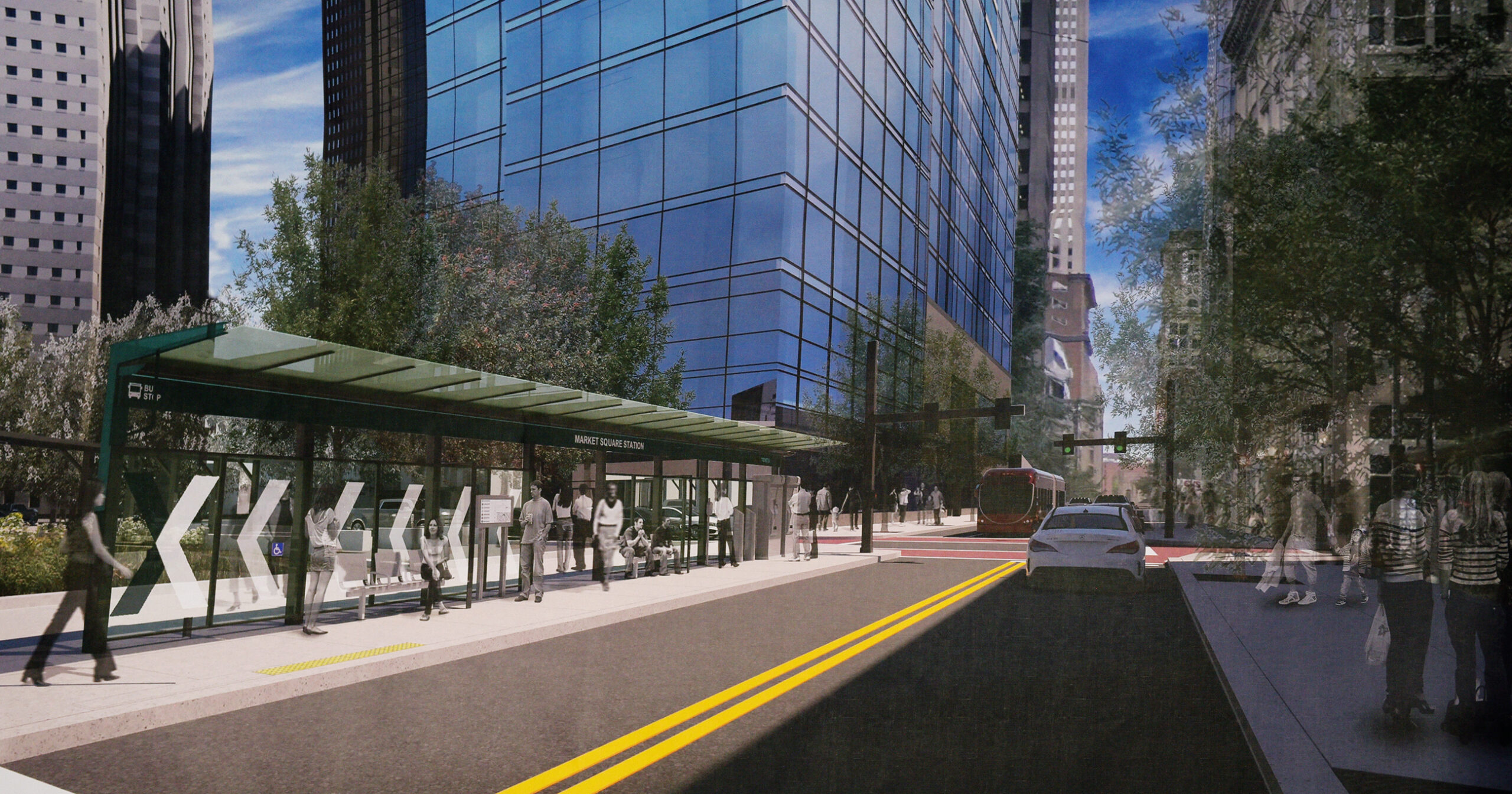In a little more than two years, bus riders should be able to get a bus from Oakland to Downtown Pittsburgh every three to five minutes, even during rush hours.
The Federal Transit Administration formally released $150 million in federal grants Tuesday to support the long-awaited Bus Rapid Transit system between two of the state’s three largest job centers. The system will establish exclusive bus lanes inbound on Fifth Avenue and outbound on Forbes Avenue, which will keep buses on schedule by preventing them from bunching together in rush-hour traffic.
In addition to the bus lanes, the $291 million project will include bike lanes on Forbes, 15 electric buses to reduce air pollution and substantial street improvements in the city’s Uptown neighborhood.
Veronica Vanterpool, FTA deputy administrator, announced release of the grant during a news conference at the David L. Lawrence Convention Center. The center is hosting the American Public Transit Association’s annual rail conference this week.
The grant money had been previously announced, but the FTA has been reviewing the details since early 2021, delaying release of the funds.
Vanterpool said the project is key to “connecting two of the busiest job centers” in the region, with a potential to serve 232,000 workers.
“We are now post-pandemic,“ she said. “It’s a big deal right now. This is not a small milestone. This BRT will be a model for more BRT projects in the Pittsburgh area.”
Along with the grant, PRT announced the system will have a new name and branding scheme. CEO Katharine Eagan Kelleman said the Downtown to Oakland routes will be called the University Line, part of the buses with a distinctive blue color that will be part of the new PRTX designation for express routes.
Allegheny County Executive Rich Fitzgerald said transportation is the key to economic redevelopment, noting that three of the four bus routes that will use the new system — 61A, B and C — serve the Monongahela Valley. Some municipalities there are among the poorest in the county.
Fitzgerald pointed to Pittsburgh’s North Shore as an example of how transit can help economic development. The last major transit project in the region was the installation of the light rail vehicle tunnel from Downtown to the area where PNC Park and Acrisure Stadium are located.
“With the transit connection there, you can see the economic investment that has taken place,” he said, noting the bars, restaurants and hotels that have been built in that area since light rail service began.
Lt. Gov. Austin Davis, a former PRT board member and McKeesport resident, called BRT “truly a transformational legacy project” that will help communities that have been “ignored for too long.”
The announcement comes nearly 2½ years after the project was submitted for federal review. That review was expected to take about six months, but FTA consultant McKissack & McKissack found substantial shortcomings that led to increasing the cost by $61 million and changing how several parts of the project will be produced.
The consultant determined, among other things, the local authority hadn’t allowed enough money for contingencies if contractors ran into unexpected problems.
That added $61 million to the cost and reduced the scope of the work. As a result, 15 electric buses and their charging stations will be purchased separately, smart traffic signals won’t be ready when the system opens, and 46 stations outside the project’s core area will be deferred initially.
The project has been divided into two construction contracts, one for the Downtown area and the other for Uptown and Oakland.
Independence Excavating Inc. of Cleveland received a $27.9 million contract for the Downtown area in March, but work couldn’t start until the federal money became available. The contractor has been getting permits and doing other preparatory work before construction begins this fall.
The second contract is expected to be awarded later this year, and work should start early next year in Uptown and Oakland.
The system will travel through the Golden Triangle inbound on Fifth Avenue to Liberty Avenue to Sixth Avenue and outbound on Forbes. There will be stations at Fifth and Ross Street, Fifth and William Penn Place, Fifth and Market Square, the Wood Street T Station on Liberty Avenue and Steel Plaza at Sixth Avenue and Grant Street.
The Downtown section will open when it is finished in about 17 months. The full system should be completed in 2025.
In addition to the FTA grant, the project is being funded through the American Rescue Plan ($19.3 million), the Congestion Mitigation Air Quality Program ($9.3 million), Allegheny County ($30 million), the city of Pittsburgh ($8.8 million) and PRT ($73.6 million).
In an interview after the announcement, Kelleman said the delay was unfortunate but occurred partially because of the change in presidential administrations and the pandemic, which limited on-site review by the agency. On the plus side, the grant announced by former President Donald Trump at $100 million in May 2020 increased by $50 million after the Biden administration took office.
The items that were removed from the BRT project will still be done but not as part of that project, she’s stressed. “True progress takes time,” she said.
Ed covers transportation at the Pittsburgh Post-Gazette, but he's currently on strike. Email him at eblazina@unionprogress.com.



